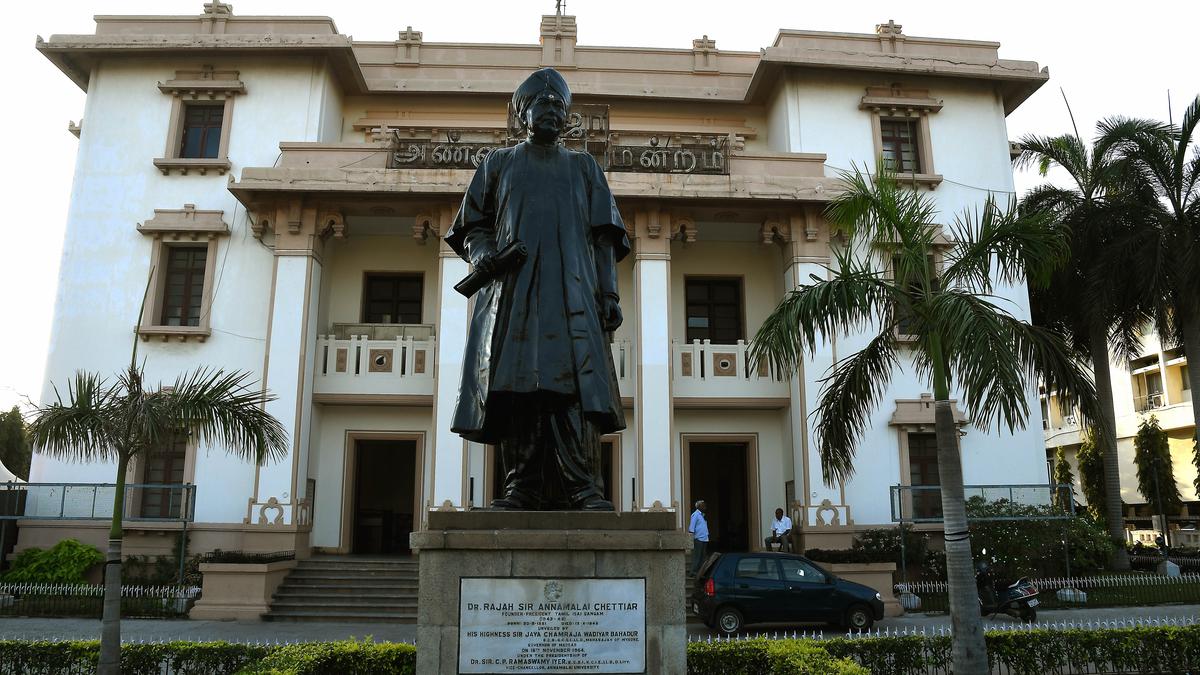
A quiet 81st annual festival at Tamil Isai Sangam
The Hindu
Explore the Tamil Isai Sangam's 81st annual festival & its history of the Tamil Song Movement, from its anti-Hindi agitation to its delectable museum & library.
Reading The Hindu of December 24, 2023, I realised that the Tamil Isai Sangam was celebrating its 81st annual festival. That had me scurrying to my personal library and fishing out the Sangam’s silver jubilee souvenir, published in 1967. It is a great compendium on what I refer to as the Tamil Song Movement, though it is conventionally spoken of as the Tamil Isai Movement.
It was a cultural churn that took place between the late 1930s and the mid 1940s. Fresh out of the anti-Hindi agitation of 1937-1939, the Tamil polity turned its attention to Carnatic music, then a mainstream and not peripheral art. The question arose as to why the bulk of songs in it were in languages such as Telugu and Sanskrit, while the greatest support for it was in the Tamil heartland. Kalki Krishnamurthy was perhaps its most active champion, writing extensively on the subject. But had it not been for the financial muscle of Raja Sir Annamalai Chettiar, the Tamil Song Movement may have remained just a demand on paper. It was the Raja’s Annamalai University that emerged as the academic core for the movement — its music department attracting numerous talents that not only tuned Tamil verses into Carnatic songs but also composed afresh, all of these being published by the university as a series of books.
In Madras, the Raja began an annual series for music, closely modelled on the conference and concert series of the Music Academy. An organisation for this was founded in May 1943, which C. Rajagopalachari named the Tamil Isai Sangam. The first of the annual series was held between December 24, 1943, and January 4, 1944, the venue being St Mary’s Parish Hall on Armenian Street, a site on which the Catholic Centre stands today. To propagate its music, the Sangam not only could afford the best performers but it also had loudspeakers installed on the street front so that the non-ticket-paying public could also hear the same. The annual series continued to be held at the Parish Hall till 1951, but in the interim, the Sangam took on lease a large parcel of land at the eastern end of the Esplanade, where it put up its auditorium.
Architect L.M. Chitale rose to creative heights in the design of this building, blending elements of Chettinad architecture with art deco. The edifice was ready by 1952, its construction closely supervised by Sir R.K. Shanmukham Chetty, independent India’s first Union Finance Minister, who was the Sangam’s president after the demise of the Raja in 1948. With what was named the Annamalai Manram being the performing venue and Annamalai University being the intellectual font, the Tamil Song Movement achieved a great success. It established the musicality of Tamil as a language and mainstreamed it on the concert platform. And in the process, it unearthed and created several Tamil compositions that can hold their own against any of the Telugu and Sanskrit classics.
In recent years, the Sangam has maintained a low profile. Run successively by the Raja’s third son M.A. Chidambaram and grandson A.C. Muthiah, it sees a low audience turnout for its annual series, many of the concert-goers citing its distant location as a reason. But that is no longer true, for there is a Metro Rail station just outside the building. I confidently predict a revival of interest in the Sangam as the Metro Rail expands its network. And that will mean more footfall at its delectable first-floor museum of musical instruments and more scholars seeking research material at its well-stocked library.
(V. Sriram is a writer and historian.)











